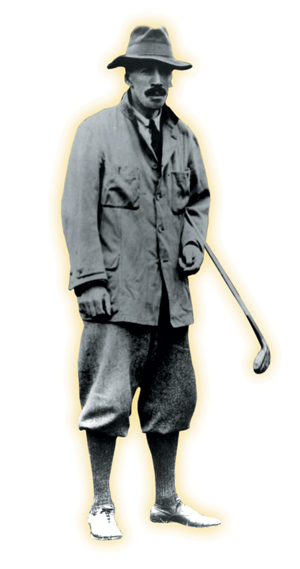PNGA Hall of Famer A.V. Macan to be inducted in Canadian Golf Hall of Fame
On July 24, 2018, A.V. Macan will enter the Canadian Golf Hall of Fame at an induction ceremony to be held at Glen Abbey Golf Club in Oakville, Ont. during the week of the RBC Canadian Open.
In 1989, Macan had been inducted by the PNGA into the Pacific Northwest Golf Hall of Fame.
Macan is being inducted in July in the “Builder” category, for his work as a golf course architect.

Macan’s designs in B.C. include the likes of Royal Colwood in Victoria and Metro Vancouver courses like Shaughnessy G&CC, Marine Drive Golf Club, Richmond CC and University Golf Course.
Some of his noted creations in the Pacific Northwest include Fircrest (Wash.) Golf Club, Broadmoor Golf Club in Seattle, Overlake G&CC in Medina, Wash., Columbia Edgewater CC in Portland and Inglewood Golf Club in Kenmore, Wash.
Macan’s grandson, Matthew Macan, spoke in a conference call from England with considerable pride of the accomplishments of his grandfather, a man he never met. In fact, it was not until the 1990s that his family became aware of Macan’s remarkable body of work.

“As a family we are absolutely delighted and honored that this has been bestowed upon him and I feel that this is very much a reflection of the quality of Mac and his vision and his tenacity,” Matthew Macan said.
“His designs seem to have endured through history. It is 135 years since he was born and I would guess that golf courses and the technology has changed dramatically in that period of time. But it has been 100 years since he designed Royal Colwood with a pencil and a piece of paper and it seems to be quite extraordinary.”
In 1908, Macan came to British Columbia from Ireland, where he had trained as a lawyer. He settled in the Victoria area, joining Victoria Golf Club and won two BC Amateur titles (1912 and 1913).
Macan also won the PNGA Men’s Amateur in 1913. While serving as the executive secretary of the PNGA in 1947, Macan donated to the Association the trophy he won at the 1913 PNGA Men’s Amateur. He wanted it to become the perpetual trophy for the Men’s Amateur. The trophy, which still bears the logo of Butte (Mont.) Country Club (site of his 1913 victory) was renamed the Macan Cup and is engraved with the names of the champions dating back to 1899.
Macan lost the lower portion of his left leg in the battle at Vimy Ridge in 1917 while serving with the Canadian military during the First World War. He continued to play competitively as an amateur after the war but golf architecture was his true love.

Michael Riste, PNGA historian and also the historian at BC Golf House, wrote a biography of Macan, Just Call Me Mac. For that book, Riste interviewed Robert Trent Jones Sr., himself one of the best course designers in history. When Riste told Jones he was writing a biography on Macan, Jones replied, “It’s about time somebody analyzed this fellow. If Macan had gotten off the boat in New York instead of Victoria in 1912, and established his business on the East Coast, he would have been just as well-known as Ross, MacKenzie and Tillinghast.”
Riste will tell you Macan had considerable and wide-ranging influence on golf courses in the Northwest. Macan either designed or was consulted on virtually every private or semi-private golf course in the Northwest during his career, which ended with his passing in 1964.
Riste said that for 50 years, Macan determined how the golfers of the Pacific Northwest played the game. Riste actually knew the man before he knew his legend. Riste grew up at Capilano G&CC in Vancouver, where Macan spent his later years.
“On many occasions, I would see this gentleman … beautiful hat, tweed, shirt and tie, and I’ll always remember his squeaky left leg. It sounded like it was nuts and bolts, and needed some oiling,” Riste said, referring to the prosthetic that Macan wore after losing his leg in World War I.
It was Jeff Mingay, a fellow Canadian golf architect, who nominated Macan for a Canadian Golf Hall of Fame induction that many see as long overdue. Mingay called Macan a pioneer in North American golf course architecture. “It is amazing that a century later many of these courses haven’t changed,” Mingay said. “Golfers are enjoying them the way they did nearly a century ago.
“You go to Colwood today and the fundamental structure of the golf course hasn’t changed at all. A couple of greens have been rebuilt, some bunkers filled in, etcetera, but the layout remains exactly the way it was in 1913. That not only speaks to the talents he had as a golf course designer, but again to the pioneering effort. It just absolutely amazes me and is such an important point to emphasize.”
(Brad Ziemer contributed to this article.)






